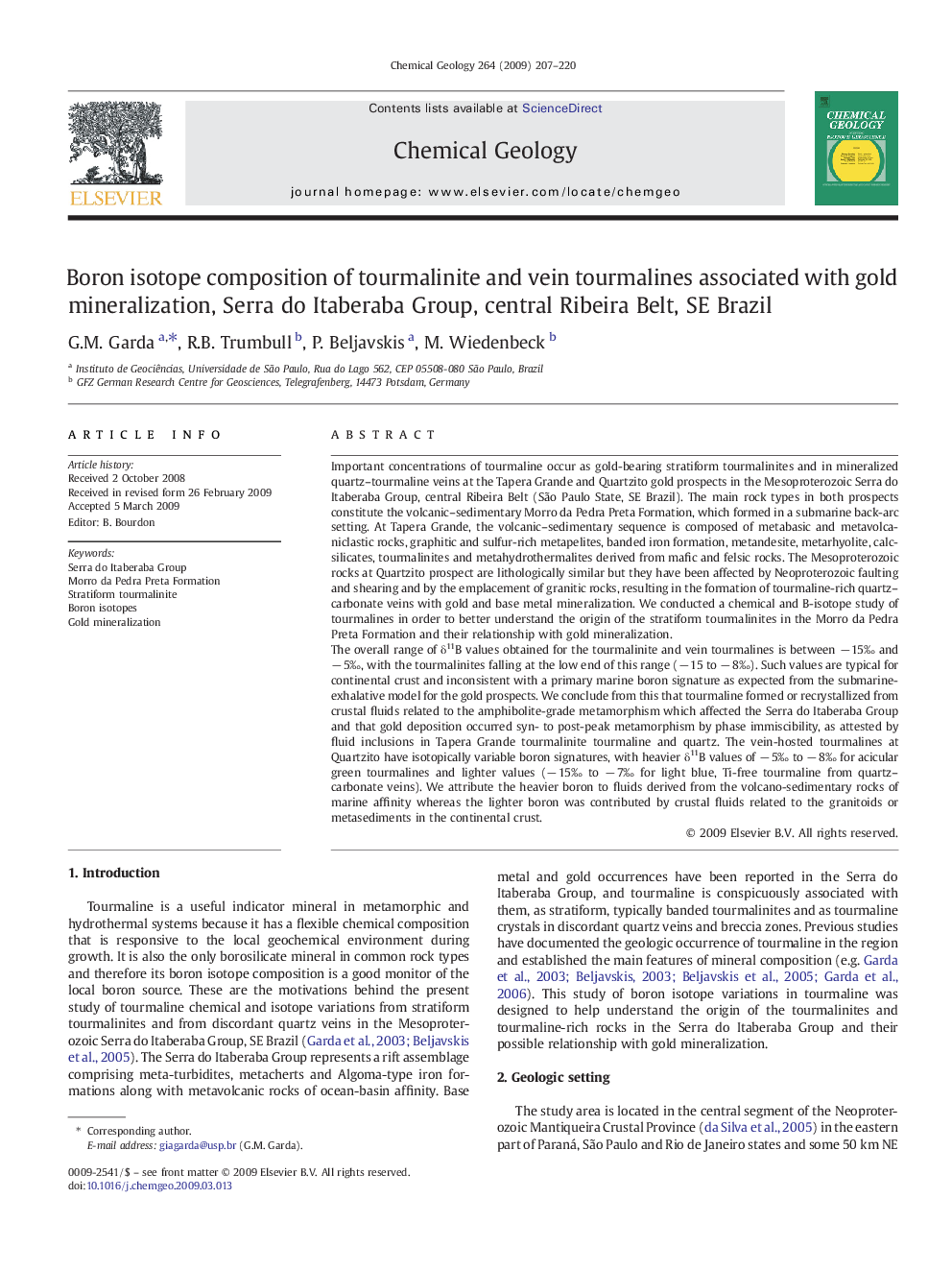| کد مقاله | کد نشریه | سال انتشار | مقاله انگلیسی | نسخه تمام متن |
|---|---|---|---|---|
| 4700311 | 1637705 | 2009 | 14 صفحه PDF | دانلود رایگان |

Important concentrations of tourmaline occur as gold-bearing stratiform tourmalinites and in mineralized quartz–tourmaline veins at the Tapera Grande and Quartzito gold prospects in the Mesoproterozoic Serra do Itaberaba Group, central Ribeira Belt (São Paulo State, SE Brazil). The main rock types in both prospects constitute the volcanic–sedimentary Morro da Pedra Preta Formation, which formed in a submarine back-arc setting. At Tapera Grande, the volcanic–sedimentary sequence is composed of metabasic and metavolcaniclastic rocks, graphitic and sulfur-rich metapelites, banded iron formation, metandesite, metarhyolite, calc-silicates, tourmalinites and metahydrothermalites derived from mafic and felsic rocks. The Mesoproterozoic rocks at Quartzito prospect are lithologically similar but they have been affected by Neoproterozoic faulting and shearing and by the emplacement of granitic rocks, resulting in the formation of tourmaline-rich quartz–carbonate veins with gold and base metal mineralization. We conducted a chemical and B-isotope study of tourmalines in order to better understand the origin of the stratiform tourmalinites in the Morro da Pedra Preta Formation and their relationship with gold mineralization.The overall range of δ11B values obtained for the tourmalinite and vein tourmalines is between − 15‰ and − 5‰, with the tourmalinites falling at the low end of this range (− 15 to − 8‰). Such values are typical for continental crust and inconsistent with a primary marine boron signature as expected from the submarine-exhalative model for the gold prospects. We conclude from this that tourmaline formed or recrystallized from crustal fluids related to the amphibolite-grade metamorphism which affected the Serra do Itaberaba Group and that gold deposition occurred syn- to post-peak metamorphism by phase immiscibility, as attested by fluid inclusions in Tapera Grande tourmalinite tourmaline and quartz. The vein-hosted tourmalines at Quartzito have isotopically variable boron signatures, with heavier δ11B values of − 5‰ to − 8‰ for acicular green tourmalines and lighter values (− 15‰ to − 7‰ for light blue, Ti-free tourmaline from quartz–carbonate veins). We attribute the heavier boron to fluids derived from the volcano-sedimentary rocks of marine affinity whereas the lighter boron was contributed by crustal fluids related to the granitoids or metasediments in the continental crust.
Journal: Chemical Geology - Volume 264, Issues 1–4, 30 June 2009, Pages 207–220